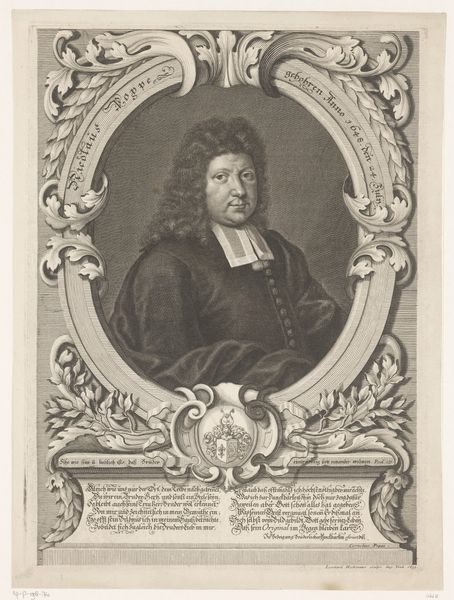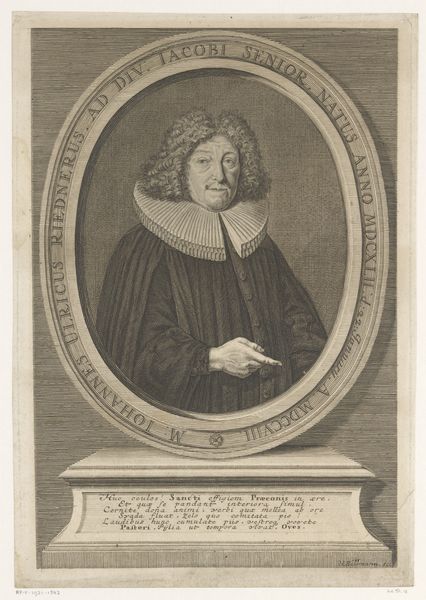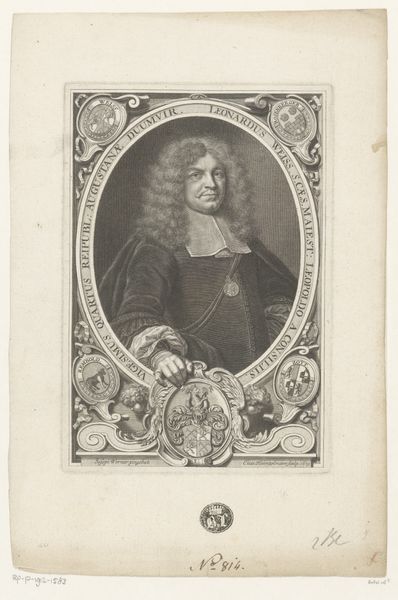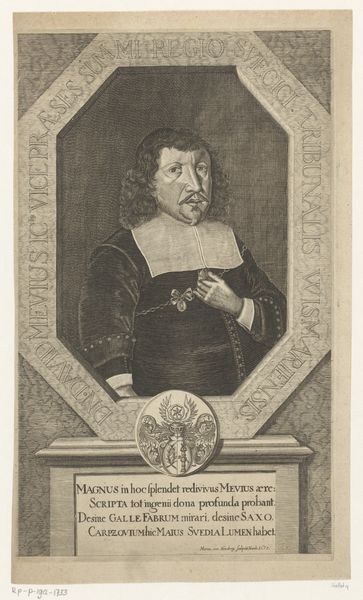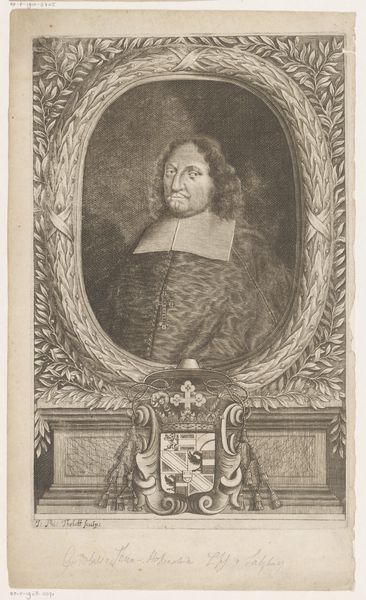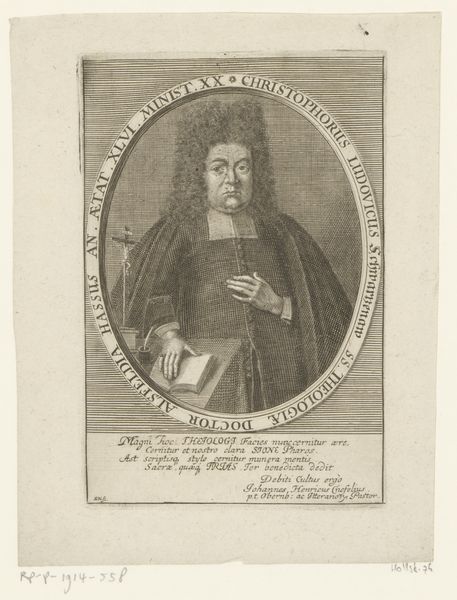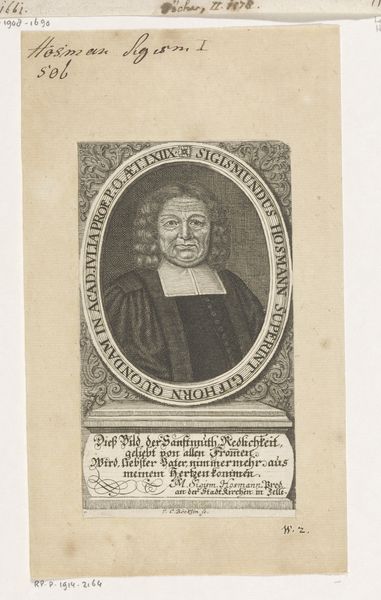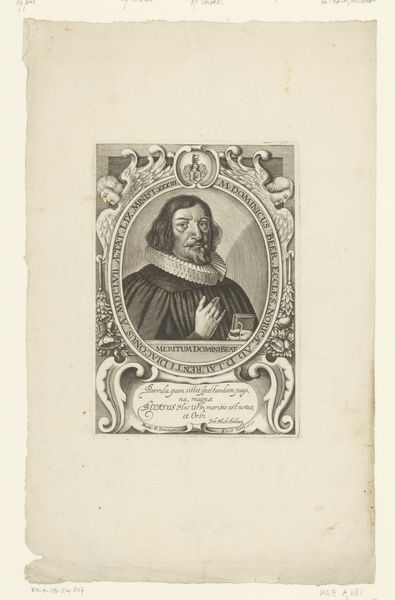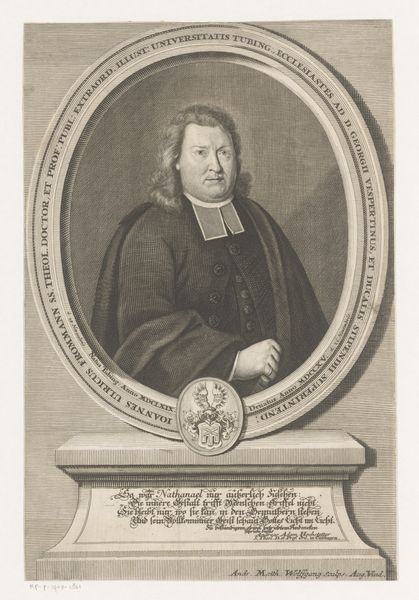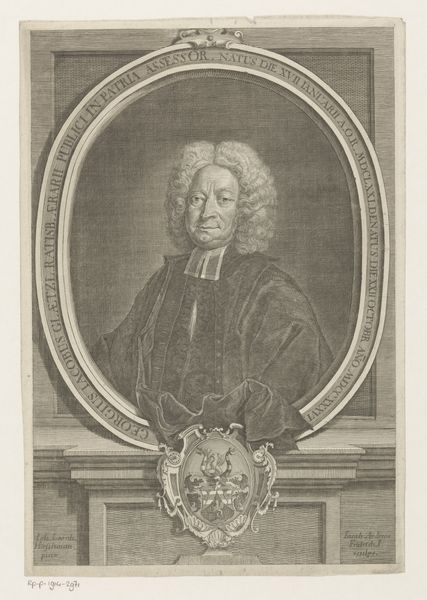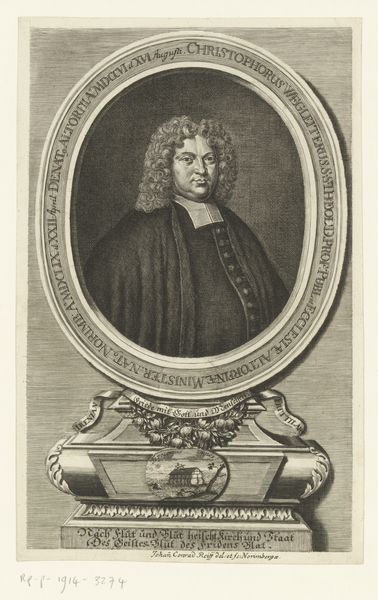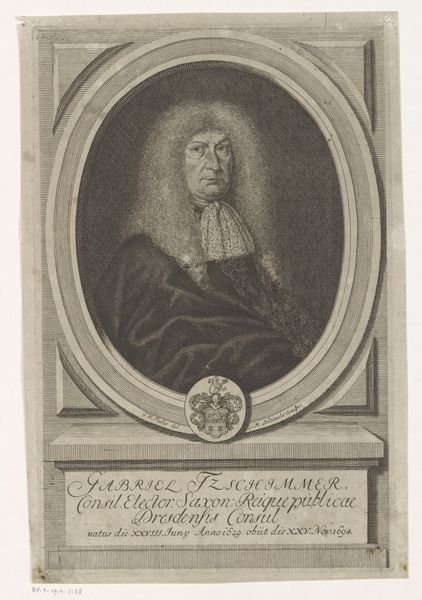
print, engraving
#
portrait
#
baroque
# print
#
old engraving style
#
caricature
#
engraving
#
monochrome
Dimensions: height 255 mm, width 159 mm
Copyright: Rijks Museum: Open Domain
Curator: I find the contrast rather striking. This is Andreas Matthäus Wolfgang's engraving of Daniel Haak, a preacher in Hamburg during the late 17th and early 18th centuries, captured around 1700 when Haak was 73 years old. It's a print, a medium designed for wide dissemination. Editor: My first impression is somber. The monochrome tones emphasize age and perhaps the seriousness of his profession. The elaborate frame feels almost overwhelming for the man portrayed. Is it celebratory or restrictive? Curator: Well, engravings often served a commemorative function, especially for prominent figures like Haak. The intricate frame, adorned with foliage and inscriptions, elevates him, imbuing him with a sense of importance befitting his role in the church and community. Editor: Yet, there’s also an element of caricature, particularly in the almost exaggerated hairstyle. Is this meant to satirize him, or is it simply an artistic convention of the time? Could this be a reflection of the social standing of clergymen? Curator: It's a fine line, isn’t it? Baroque portraiture, especially in print, often aimed for a lifelike depiction within an established visual language. While the hairstyle might appear amplified to modern eyes, it likely adhered to the fashion and ideals of presenting oneself with dignity and authority in that period. Remember the wigs worn at the time as status symbols! Editor: The surrounding text adds another layer. It tells us about his age, his position...it fixes him in history, making him accessible and at the same time setting him apart. But what kind of legacy was this artwork intended to cultivate? Curator: The portrait likely served multiple purposes: commemoration, certainly; perhaps also reinforcing his authority within his religious community, and as a memento for his followers. Engravings like this were instrumental in shaping public memory and transmitting social and religious values across generations. Editor: Ultimately, it makes me think about how carefully constructed these images were, designed to convey very specific messages about status and authority, carefully walking a line between genuine respect and perhaps a touch of gentle mockery. Curator: Indeed. It provides a powerful reminder that even seemingly straightforward portraits can offer nuanced insights into the cultural landscape of their time.
Comments
No comments
Be the first to comment and join the conversation on the ultimate creative platform.
